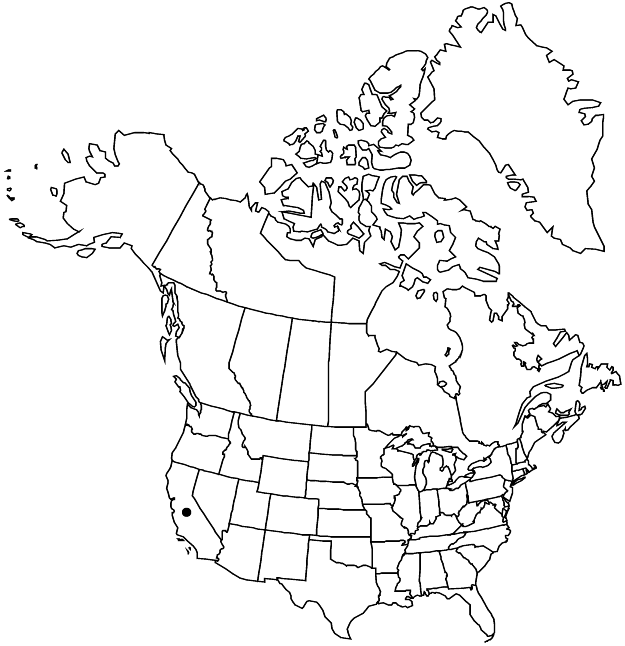Chorizanthe orcuttiana
Proc. Davenport Acad. Nat. Sci. 4: 54. 1884.
Plants prostrate, 0.1–0.5 × 0.3–2 (–2.5) dm, villous. Leaves basal; petiole 1–2 cm; blade narrowly oblanceolate, 0.5–1.5 × 0.2–0.35 (–0.5) cm, thinly pubescent. Inflorescences with involucres in small clusters 0.5–1 cm diam., greenish; bracts 2, sessile, unequal, 1 laminar and oblanceolate, 0.3–1 cm × 1–3 mm, awnless, this opposite linear, acicular, greatly reduced, 0.1–0.2 cm × 0.3–0.6 mm bract terminated by short, straight awn 0.6–1 mm. Involucres 1, greenish, campanulate, 3-ribbed, 0.8–2 mm, faintly corrugate, pubescent; teeth 3, equal, 1.8–2 mm; awns uncinate, 0.6–1 mm. Flowers 1, included to slightly exserted; perianth yellow, cylindric, 1.5–1.8 mm, densely pubescent abaxially; tepals connate ca. 1/2 their length, monomorphic, narrowly oblanceolate, obtuse to truncate, entire apically, slightly spreading; stamens 9, slightly exserted; filaments distinct, 0.5–0.8 mm, glabrous; anthers reddish, ovate, 0.2–0.3 mm. Achenes dark-brown, lenticular, 2–2.2 mm. 2n = (76, 78), 80, (84).
Phenology: Flowering Mar–May.
Habitat: Sandy soil, mesas and hills near coast, coastal scrub communities
Elevation: 60-200 m
Discussion
Of conservation concern.
Chorizanthe orcuttiana is known from a few populations on coastal mesas and hills near San Diego, San Diego County. It is federally listed as endangered. The species is an octoploid that may well have resulted from an ancient hybridization and doubling of chromosomes involving C. procumbens and C. polygonoides var. longispina. The Orcutt spineflower grows in soft, white sand; C. procumbens and C. polygonoides var. longispina are restricted to gravelly sites.
Selected References
None.
Lower Taxa
"longest" is not a number."/2" is not declared as a valid unit of measurement for this property."dm" is not declared as a valid unit of measurement for this property."dm" is not declared as a valid unit of measurement for this property.
